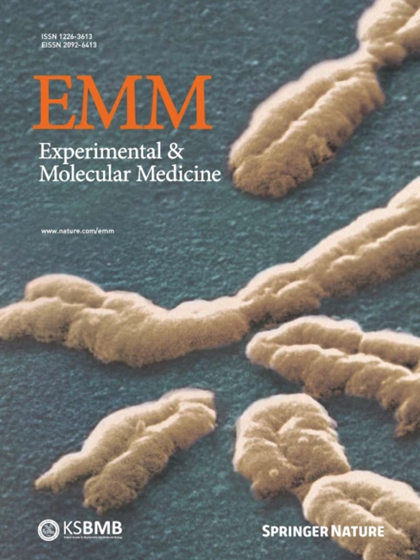Suppressing astrocytic GABA transaminase enhances tonic inhibition and weakens hippocampal spatial memory
IF 9.5
2区 医学
Q1 BIOCHEMISTRY & MOLECULAR BIOLOGY
引用次数: 0
Abstract
Pharmacological suppression of γ-aminobutyric acid (GABA) transaminase (GABA-T), the sole GABA-degrading enzyme and a potential therapeutic target for treating brain disorders such as epilepsy, increases not only phasic inhibition but also tonic inhibition. However, the specific cellular source, neuromodulatory effects and potential therapeutic benefits of this enhanced tonic inhibition remain unexplored due to the lack of cell-type-specific gene manipulation studies. Here we report that the increase in tonic GABA currents observed after GABA-T suppression is predominantly due to increased tonic GABA release from astrocytes rather than action-potential-dependent synaptic GABA spillover. General GABA-T knockdown (KD) by a short hairpin RNA considerably increased tonic GABA currents in dentate granule cells, thereby enhancing tonic inhibition. An astrocyte-specific rescue of GABA-T following general GABA-T KD normalized the elevated tonic GABA currents to near control levels. Tetrodotoxin-insensitive tonic GABA currents were significantly increased after general GABA-T KD, whereas tetrodotoxin-sensitive tonic GABA currents showed no significant increase, suggesting that this enhanced tonic inhibition is primarily action-potential independent. General GABA-T KD reduced the spike probability of granule cells and impaired dorsal hippocampus-dependent spatial memory, which were fully reversed by astrocyte-specific GABA-T rescue. These findings suggest that suppressing astrocytic GABA-T may be sufficient to influence the excitatory/inhibitory balance in the brain and associated behaviors. Our study implies that the therapeutic benefits of pharmacological GABA-T suppression may be largely attributed to the modulation of astrocytic GABA-T and its impact on tonic GABA release from astrocytes. This study explores how boosting a specific brain process called tonic inhibition affects memory and brain function. Tonic inhibition involves a chemical called γ-aminobutyric acid (GABA) that helps downregulate brain activity. Researchers wanted to understand how blocking GABA degradation in brain cells called astrocytes affects this process. The study focused on the hippocampus, a brain area important for memory. Researchers used mice to test their ideas. They reduced the expression of an enzyme called GABA transaminase in astrocytes, which normally helps break down GABA. This reduction increased astrocytic GABA release, enhancing tonic inhibition and reducing brain cell activity. They found that this change impaired long-term memory but not short-term memory. The results suggest that astrocytic GABA transaminase plays a crucial role in controlling brain activity and memory. By manipulating this enzyme, scientists might develop new treatments for neurological disorders. This summary was initially drafted using artificial intelligence, then revised and fact-checked by the author.

抑制星形细胞GABA转氨酶增强强直抑制,减弱海马空间记忆。
γ-氨基丁酸(GABA)转氨酶(GABA- t)是唯一的GABA降解酶,也是治疗癫痫等脑部疾病的潜在治疗靶点,对γ-氨基丁酸转氨酶(GABA- t)的药理抑制不仅增加了相抑制,而且增加了强直抑制。然而,由于缺乏细胞类型特异性基因操作研究,这种增强的强直抑制的特定细胞来源、神经调节作用和潜在的治疗益处仍未被探索。在这里,我们报告了GABA- t抑制后观察到的强直性GABA电流的增加主要是由于星形胶质细胞释放的强直性GABA增加,而不是动作电位依赖性突触GABA溢出。短发夹RNA的一般GABA- t敲低(KD)显著增加齿状颗粒细胞的强直GABA电流,从而增强强直抑制。在一般GABA- t KD后,星形细胞特异性GABA- t的恢复使升高的强直性GABA电流正常化到接近控制水平。一般GABA- t KD后,河豚毒素不敏感的强直性GABA电流显著增加,而河豚毒素敏感的强直性GABA电流无显著增加,表明这种增强的强直性抑制主要与动作电位无关。一般GABA-T KD降低颗粒细胞的尖峰概率和海马背侧依赖的空间记忆受损,而星形胶质细胞特异性GABA-T救援完全逆转了这一作用。这些发现表明,抑制星形胶质细胞GABA-T可能足以影响大脑中的兴奋/抑制平衡和相关行为。我们的研究表明,药物抑制GABA- t的治疗效果可能主要归因于星形胶质细胞GABA- t的调节及其对星形胶质细胞强直性GABA释放的影响。在这里,我们报告了GABA-T抑制的不同作用,这取决于细胞类型;在星形胶质细胞中抑制GABA-T增强强直抑制,而在gaba能神经元中抑制GABA-T增强相位抑制。我们的研究结果表明,靶向抑制星形胶质细胞GABA- t不仅可以增强星形胶质细胞的强直性GABA释放,还可以显著影响大脑中的兴奋/抑制平衡,从而对行为产生相应的影响。这表明星形胶质细胞GABA- t调节具有开发新的治疗策略的潜力,旨在通过调节星形胶质细胞GABA代谢来治疗认知和神经疾病。GAD谷氨酸脱羧酶,MAO-B单胺氧化酶B, BEST1 strophin 1, GABA- t GABA转氨酶,GAT GABA转运蛋白,DG齿状回,SSA琥珀酸半醛。
本文章由计算机程序翻译,如有差异,请以英文原文为准。
求助全文
约1分钟内获得全文
求助全文
来源期刊

Experimental and Molecular Medicine
医学-生化与分子生物学
CiteScore
19.50
自引率
0.80%
发文量
166
审稿时长
3 months
期刊介绍:
Experimental & Molecular Medicine (EMM) stands as Korea's pioneering biochemistry journal, established in 1964 and rejuvenated in 1996 as an Open Access, fully peer-reviewed international journal. Dedicated to advancing translational research and showcasing recent breakthroughs in the biomedical realm, EMM invites submissions encompassing genetic, molecular, and cellular studies of human physiology and diseases. Emphasizing the correlation between experimental and translational research and enhanced clinical benefits, the journal actively encourages contributions employing specific molecular tools. Welcoming studies that bridge basic discoveries with clinical relevance, alongside articles demonstrating clear in vivo significance and novelty, Experimental & Molecular Medicine proudly serves as an open-access, online-only repository of cutting-edge medical research.
 求助内容:
求助内容: 应助结果提醒方式:
应助结果提醒方式:


